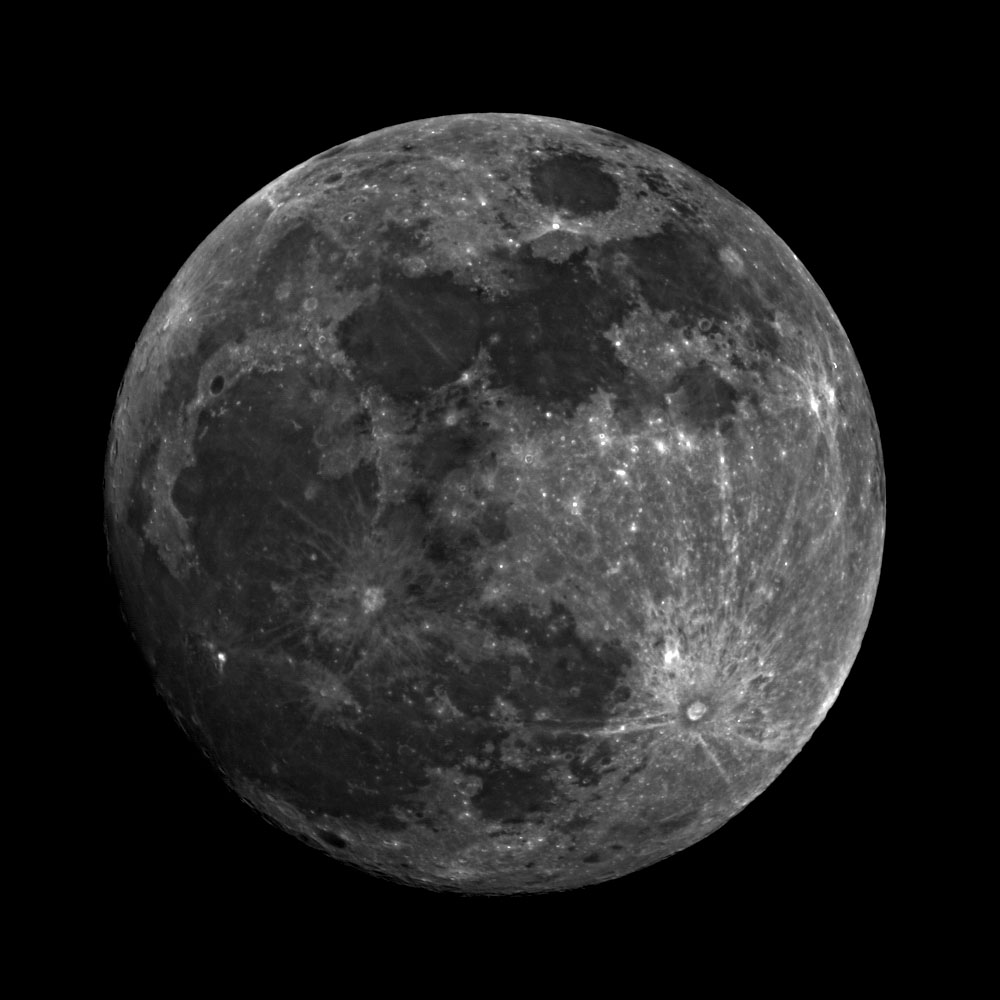
image by Stefanos Sofologis, Skiathos il.- Greece
I have always been impressed by the brightness of some features on the moon, especially when it is full and the image contrast is lowered significantly due to the lack of shadows. On the other hand, these bright spots remind us that the moon is a body with a low albedo, thus exposing strongly any spots with normal or high albedo material. This kind of material can be seen near impact areas, either on the rims of craters or ejected radially around big craters, reaching hundreds of kilometers away. Usually the brightest examples are associated with more recent impacts which excavate new material yet unexposed to the solar radiation. A good way to appreciate the brightness differences but also the variety of the hues of the ground is to use big binoculars or a binoviewer. Two-eye vision is more sensitive and responsive to light and color differences than one-eye vision.
Stefanos Sofologis
Technical Details
Time: 1/4/2007, 21:52, less than one day before full moon.
Telescope: Orion Optics 250mm f/4.8 newtonian
Camera: Canon EOS 400D with
Baader MP Coma Corrector attached
Exposure: 1/400sec, ISO100, monochrome mode.
Yesterday's LPOD: A Mystery Wrapped in a Riddle Covered to the Brim in Lava
Tomorrow's LPOD: A Major Highland Boundary?
COMMENTS?
Register, Log in, and join in the comments.



